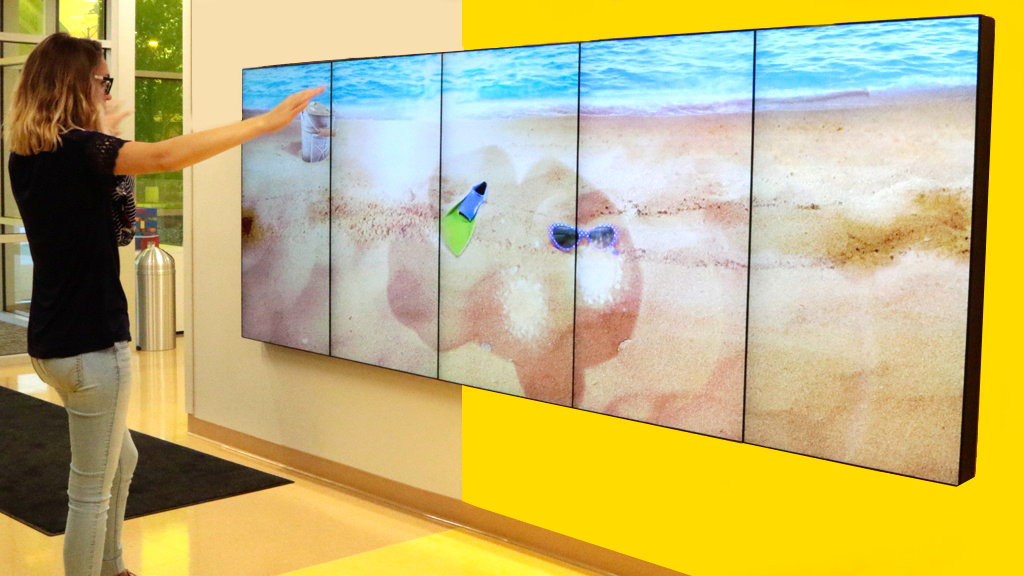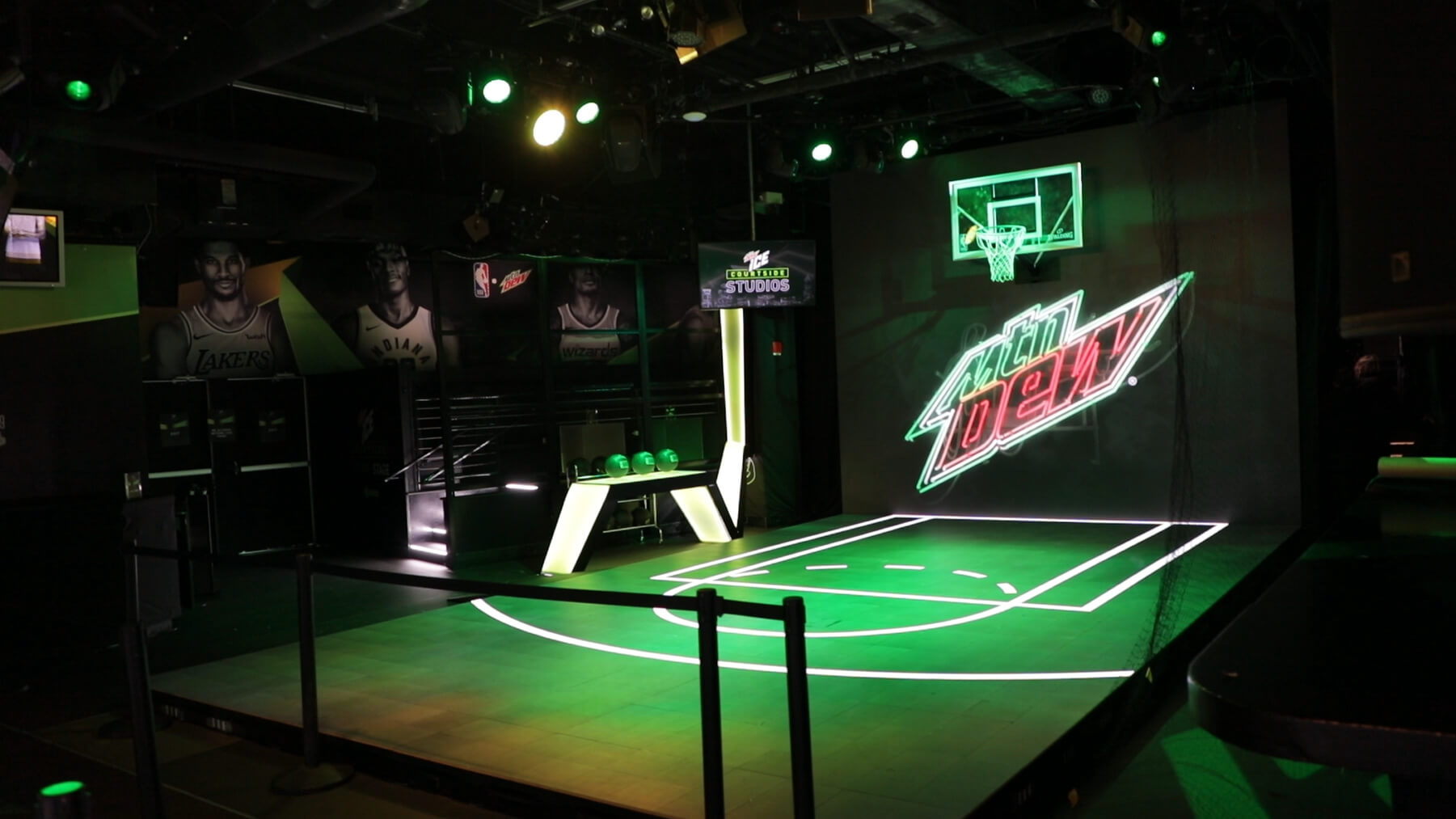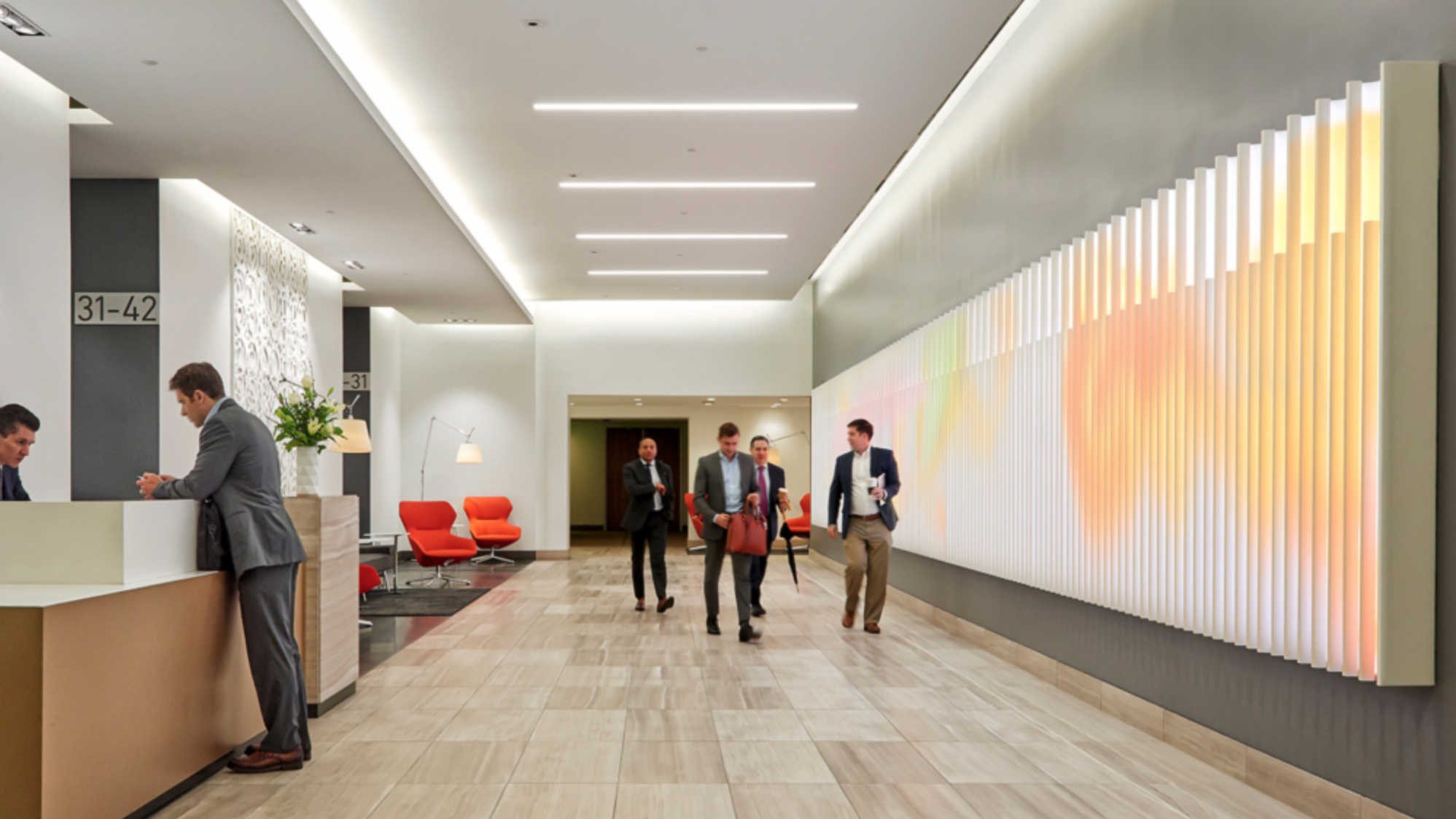It seems like every time you turn your head, new spaces are being retrofitted with video wall technology. “We have reliable technologies now for the things we dreamt of with our clients five years ago,” said Andrew Lazarow, a director at LAB at Rockwell Group. (At the time this article was written, Lazarow was a senior designer and AV technologist with ESI Design, an NBBJ Studio.) “Video walls can now easily span the length of an entire building bend, have depth, the list goes on. These technological advancements have helped push designers to explore more meaningful ways to connect with audiences.”

With the wide availability of lower-cost, higher-resolution screens, it’s no longer enough to just have a video wall to stand out from the crowd. Clients looking to truly make a statement are turning their attention to incorporating interactive and reactive signage technologies, allowing them to engage with users in unique and innovative ways. Due to the COVID-19 pandemic and its impact on how people interact within physical spaces, clients are looking to incorporate touch-free interactivity into their video walls, bringing greater attention to recent technical innovations.
[ The Importance of Compelling UX Design in Corporate Installations ]

With clients trending away from touch, integrators are educating their clients about touch-free options, including motion-triggered technology. Scott Schoeneberger, managing partner of Bluewater Technologies Group, says many of his company’s clients have been asking how they can convert their current video walls to touch-less technology, with some even opting to turn off interactive features entirely until they can adapt. Recent deployments show how choosing to adapt video wall networks can provide greater flexibility and engagement during the pandemic and beyond.
Prior to the pandemic, Bluewater worked with the Children’s Hospital of Michigan Foundation to integrate its ActivePlay product—large, gesture-controlled interactive displays—to create a soothing and welcoming immersive environment for young patients within the hospital. These areas, designed for touch-free interactivity to help limit the spread of germs within the hospital setting, encourage children to engage with their new environment using physical gestures, entertaining and empowering them within the space. Children’s Hospital of Michigan Foundation CEO Luanne Thomas Ewald said, “Kids come in clinging to their parents, very nervous about what is supposed to happen. Then we see kids drift toward a wall and go into their own little world. That’s definitely the environment we were trying to create.”
Above video: As people walk by the colorful media installation inside the lobby of 44 Montgomery Street created by ESI Design, they transform the space in real time. Acting as digital paintbrushes, people moving throughout the lobby cause the motion-activated media installation to trail a colored path across the display that matches their movement.
ESI Design has been working with clients on zero-touch interactive video walls for years, staying away from the phone-style touch engagement, and allowing the visitors to naturally influence the space around them. “We have found that the standard video wall has more impact on the people who move through the space when it listens and reacts to the visitor. This holistic view transforms places into experiences that are memorable beyond just one piece of technology,” said Lazarow.
[ The Integration Guide to Video Walls ]
A great example of a reactive display is installed at Terrell Place, an office and retail center in Washington, D.C., where ESI Design was tasked with creating a contemporary and exciting interior via interactive display technology. Relying on 1,700 square feet of motion-activated LED displays, ESI Design created artwork that evolves and changes in response to the actions of viewers. In one example, displayed cherry blossoms appear to flutter in the wind generated by a person walking by.

At WarnerMedia’s new headquarters in New York City’s Hudson Yards, ESI Design created activations driven by a combination of lidar sensors and depth-sensing cameras. The goal was to express WarnerMedia’s identity through an experience instead of simple brand messaging. Lazarow said that this branded interactive experience was “initially designed to add multi-touch interactivity across a large LED surface,” but “calibration can be easily adapted to make the interactive completely touchless.”
ESI Designs has had conversations with many of its clients about the best ways to adapt current touchscreen designs, allowing for greater flexibility when it comes to how the video wall is used. “For newer projects, the need for flexibility and customization is in higher demand than the specific request for touchless,” Lazarow added.

Beyond being used to enhance an environment, interactive video walls can be integral in limiting personal touchpoints in a variety of spaces. “Lots of my clients are looking for interactive flight boards for meeting rooms,” said Stephanie Scolari, AV project manager with IES Communications. “They want to be able to use the flight boards as wayfinding software to direct meeting participant to the correct rooms and also to display what rooms are available.” Beyond meeting rooms and corporate settings, these capabilities could be used to direct traffic in transit centers, hospitals, and museums.
While the tech isn’t necessarily touch-free, integrators are seeing more requests for interactive floors that guide engagement from the user. During the 2019 NBA All-Star Weekend, MTN DEW and Bluewater partnered on an interactive basketball court whose floor was constructed of LED displays. Fans would step up to the hoop and a moving ring on the LED floor directed them to where they would take their shot. Corresponding content would then appear on the high-resolution canvas on the back wall and up and down the floor.

For clients looking to the future, there are plenty of exciting interactive capabilities on the horizon. Software is currently capable of interfacing with overhead cameras to monitor and predict the movement of those passing by. This technology allows for interaction to happen naturally without any direct input from the user, according to Schoeneberger. “I’m most excited about the mixed use and creative use case video wall—more architecturally integrated content that’s driven by data with input from local sensors or relevant data points.”
[ The Need for Adaptability Drives LED Video Wall Installs ]
Lazarow is excited by some of the more futuristic technology that is being accelerated to market. “Parallel Reality has partnered with Delta Airlines, already demoing video walls that show viewers different content based on their positions.” Touchless haptics, which use ultrasound waves to give the user the feeling of different materials and weights without them touching anything, is currently being fast-tracked and could be something we start to see in installs very soon. “We know that experiences involving multiple senses are more impactful and create longer-lasting memories. With innovations like touchless haptics, users feel like they are flipping invisible switches or tapping buttons in midair. Technologies like these will only become more fine-tuned to the point where, five years from now, touchless interactions will be as reliable and mature as large-scale video walls are today.”
Related Stories
Opportunities Expand for LED Video Walls • Key trends in the video wall space include increasing display sizes, installation flexibility, resolution, and accessibility.
Enriching History with AV • Museums are finding themselves in the position of having to balance the function of educating and entertaining visitors with very specific health and safety requirements. For help, museum directors are relying on integrators to assist them in creating experiences that are both safe and engaging.
LED Video Walls in Corporate Environments • While LED video walls previously seemed unattainable for a large portion of companies (think small- to medium-sized businesses), the technology and content needed to successfully wow internal and external clients is becoming more accessible.

